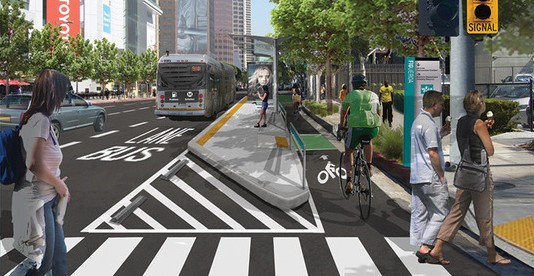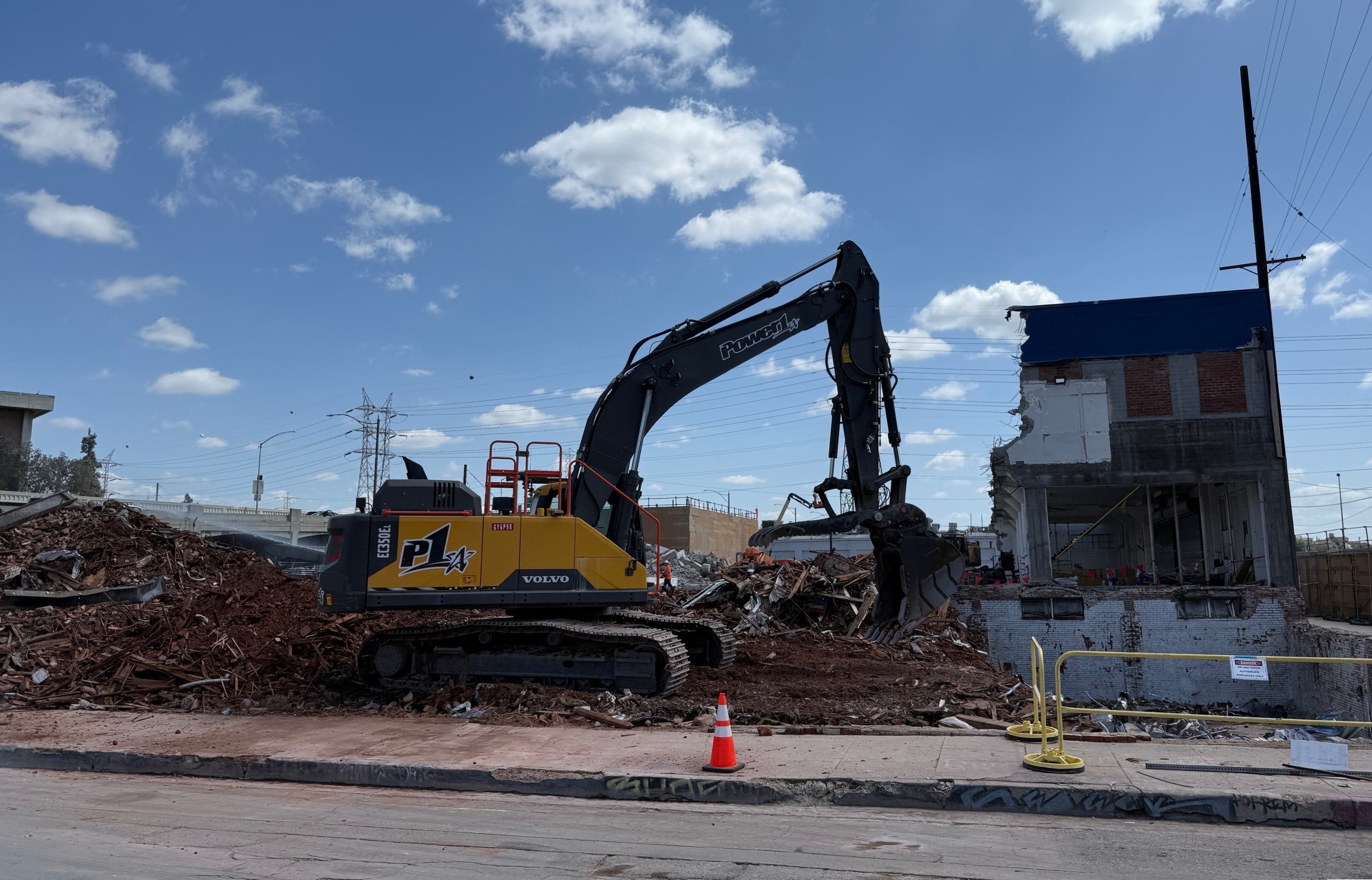At yesterday's monthly meeting, the Metro board approved guidelines that will direct Measure M spending. In the process, the board approved a half dozen motions that modified the guidelines. One modification, shepherded by Long Beach Mayor Robert Garcia, is especially important in shifting single-focus, car-only projects into complete streets that accommodate all road users.
Garcia's motion made a very significant change to shift one methodology used to evaluate project impacts - from "level of service" (LOS) to "vehicle Miles Traveled" (VMT). This all ends up being somewhat insider, and very wonky, but the implications for transportation spending are actually very important.
Investing in Place, in an article earlier this week, explains the differences between LOS and VMT:
LOS only looks at one mode–cars–and considers all vehicles the same, whether they have one driver or a bus full of 50 people. Instead, VMT measures the efficiency of the transportation system and recognizes how high-capacity modes, like transit, can move more people more cost-effectively. Even worse, LOS is based on faulty assumptions that ignore how people actually respond to changes in the transportation system. It favors the types of projects that induce more congestion, like roadway widening, rather than those that improve mobility, like transit and ExpressLanes. Using VMT enables project planners to consider the overall capacity of the corridor rather than just the capacity for vehicles.
Streetsblog readers may already be aware that state legislation, S.B. 743, requires that California municipalities end use of LOS, and transition to using VMT for environmental analysis. Pasadena and Santa Monica have already transitioned away from LOS; the city of L.A. is working towards it.
Metro's proposed Measure M guidelines had specified that "highway category" projects (which includes projects not just on freeways, but also on surface streets, especially arterials) could be eligible if they "improve mobility/level of service."
A motion by directors Robert Garcia, Mike Bonin, Hilda Solis, and Janice Hahn, replaced LOS with VMT "so that these funds may be spent on operational improvements for movement of people traveling on foot, by bike, or by transit, in addition to automobile travel, in order to optimize the movement of people by all modes, not just vehicular travel."
The board approved several other motions modifying the guidelines:
- A Hahn motion eliminated a restriction that mandated highway funds be spent on streets within one mile of a state highway
- A Garcetti motion allowed for private organizations to receive "Visionary Project" seed funding
- A Garcia motion directed that Metro identify non-local-return funding sources for local jurisdictions' three percent match for major transit projects
- A Solis motion, made from the floor, clarified that relinquished state highways were eligible for highway funding
- A Krekorian motion, made from the floor, clarified percentages for ADA paratransit and student and senior pass discounts
One other item not explicitly discussed but determined by the adoption of the guidelines: a possible annual "floor" for local return. Cities receive Measure M "local return" funds on a per capita basis - proportional to that city's population. Some boardmembers had argued that cities with small populations - Vernon, Hidden Hills, Irwindale and others - needed to received a minimum allocation each year. Other boardmembers pushed back against this, citing that more money for small cities would come at the expense of cities with larger populations. The Measure M guidelines were approved with no annual floor - so local return will be a straightforward per capita allocation.
Overall, as Measure M represented a significant step toward funding a multi-modal spending program, the Measure M guidelines support Metro's mission to build, in the words of Phil Washington, "a balanced transportation system." Investing in Place, the non-profit arguably most heavily watchdogging Measure M and its guidelines, gave the new guidelines a grade of B+; see their report card for further analysis.
L.A. County taxpayers will begin actually paying Measure M's half-cent sales tax in one week - on Saturday July 1.







